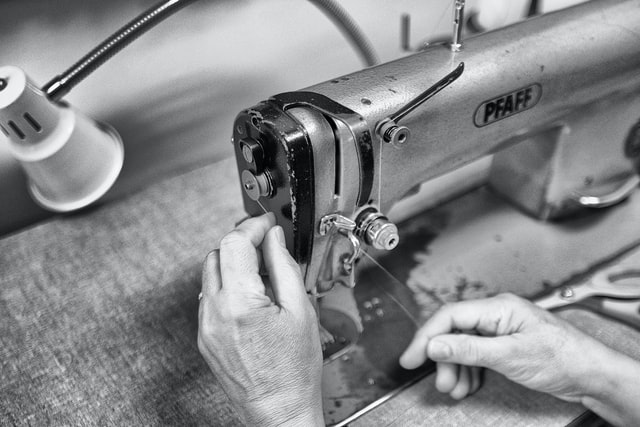What is the best light to use in a sewing room?
Your sewing room might be the room you spend most of your waking hours when at home, so it’s important to ensure that the light in there is set up so that you can see and enjoy your craft at optimal levels.
Being able to clearly see under your sewing needle, as well as all the surrounding areas of the sewing machine can help reduce fatigue, which lets you work for longer whilst also improving accuracy.
Ensure you get an even spread of light
To ensure that you get a source of well-balanced light around your sewing area, you should look at daylight lamps that have a wide and even spread of light, such as the Slim Lamp or Task Lamp.
These two daylight lamps operate at 6500K, which is the level of daylight light you see when the sun is at its highest point in the day. They also have a high CRI (Colour Rendering Index) output, meaning that you get a consistent level of brightness with a high level of colour matching, enabling you to sew long after the sun has set.
Position your lamp over the sewing machine and work-space
Daylight lamps have LED daylight bulbs which work for an average of 20,000 hours (the equivalent of leaving your lamp on solidly for 833 days), in comparison to halogen light bulbs which last for only 2000 hours.
Ideally, your lamp should fix/clamp to the side of your work-station, providing more room for your sewing machine if you are working in a tight space, or to enable you to fully utilise your cutting mat without the base of the lamp hampering the space you are using.

What Is The Best Light To Use In A Sewing Room?
If you are using a sewing machine that has a light built-in above the needle (as most modern sewing machines do), then pairing this with the daylight lamp above the sewing machine will help to reduce shadowing. Should you need to pick up some scissors or additional thread these two lights working together will ensure you can clearly see what you are working on and also your close surroundings.
Not having the luxury of the close surrounding light will slow down your work as your peripheral vision will be hampered by the lack of light.
In summary
- Position the lamp directly over the sewing machine. You want a bright and widespread of light so that you can see all of your close surroundings, whilst reducing shadowing.
- Buy a lamp that can clamp to the side of the table. This will provide you with more space at your workstation to keep items such as scissors, thread and needles close at hand.
- Utilise the light colour of your daylight lamp. As the sun sets, reduce the level of daylight you see from the lamp. This will help you switch off when you go to sleep because bright daylight lights could keep you awake longer than you want to be if you use them at full brightness in the evening.
Author
Clare Donnelly – Managing Director of Native Lighting Clare has over 15 years of experience working in the lighting sector. She has previously written blogs for the Beauty industry and numerous articles for crafting magazines along with presenting on shopping channels, such as Hochanda.

